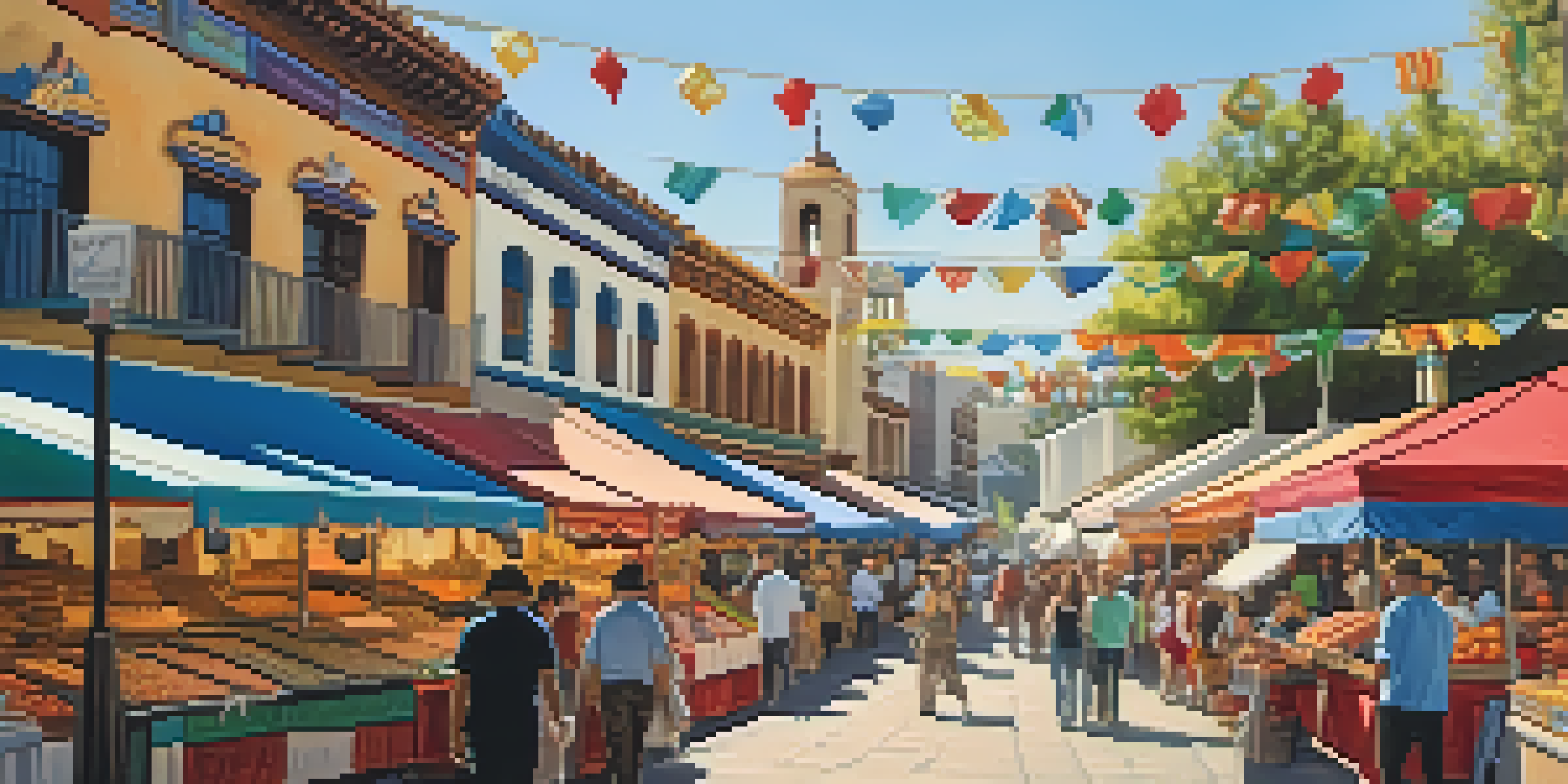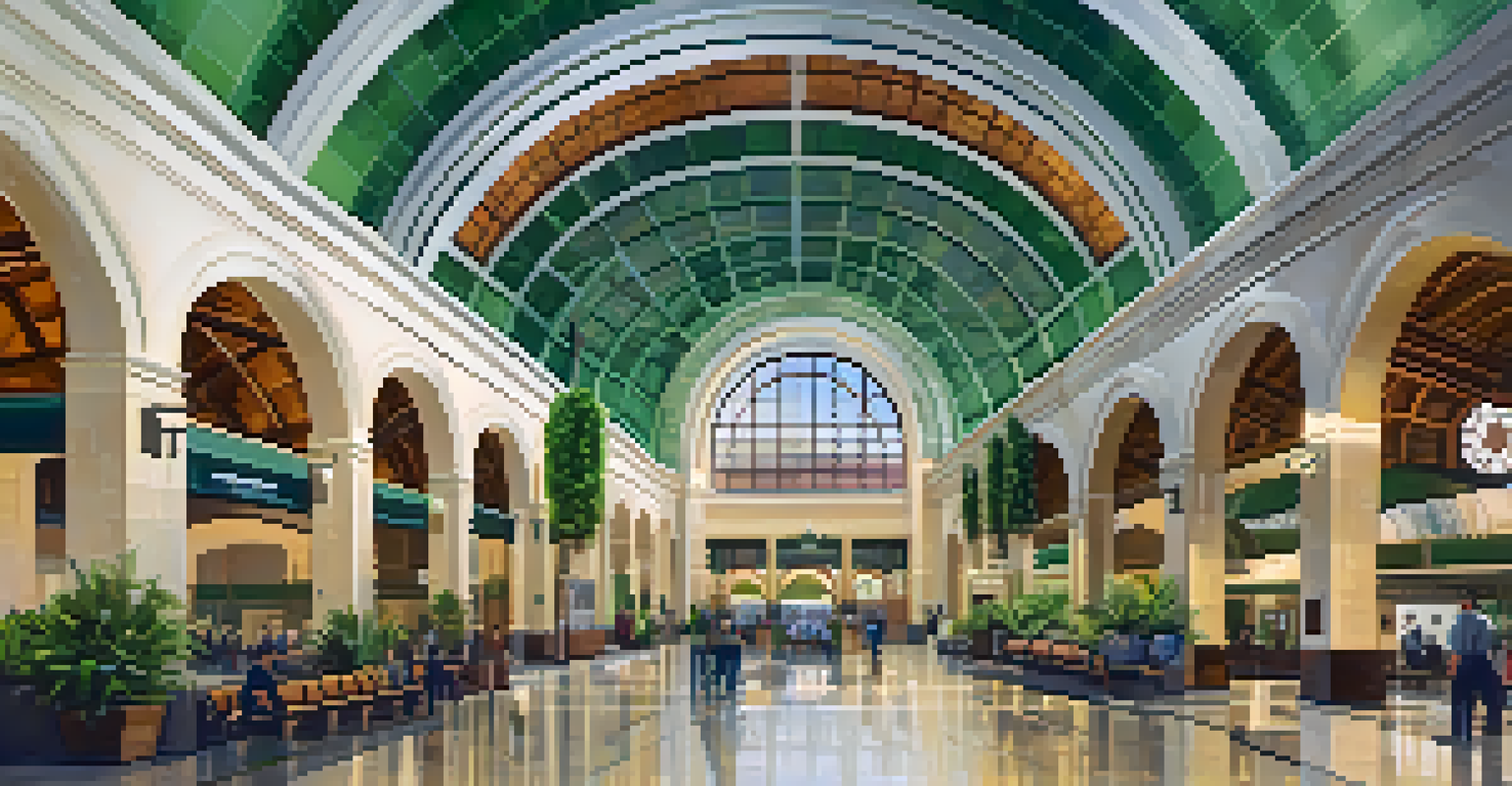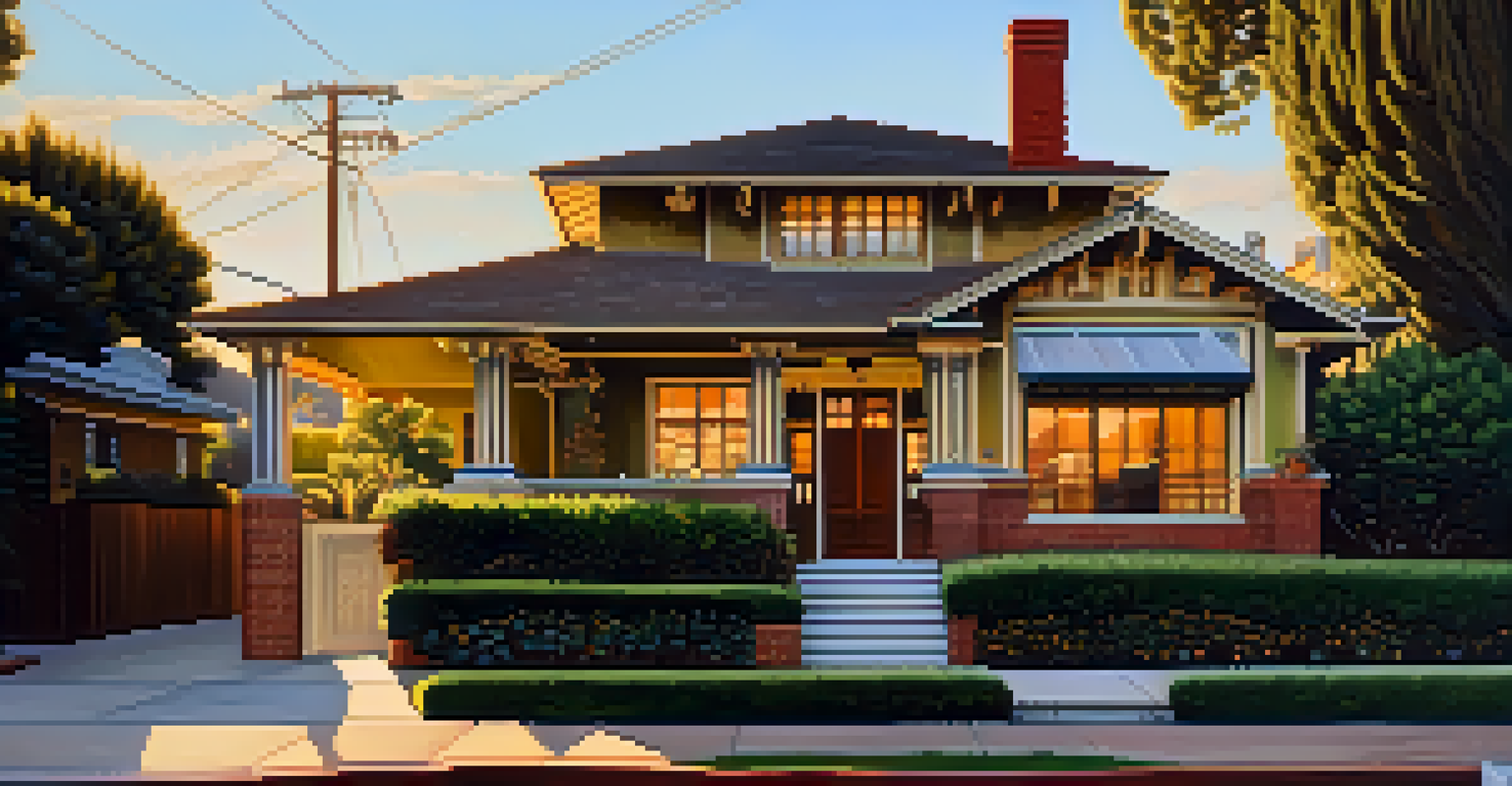Historic Preservation vs. New Development in Los Angeles

Understanding Historic Preservation in Los Angeles
Historic preservation in Los Angeles is a movement aimed at safeguarding the city's rich architectural legacy. With landmarks ranging from the iconic Hollywood sign to the charming Craftsman homes, these structures tell the story of the city’s diverse past. Preservation efforts are often driven by community members, historians, and local governments who wish to maintain cultural heritage.
Preservation is not a static process, but a dynamic one that involves adaptation and innovation.
The process of preserving historic buildings involves legal protections, restoration guidelines, and community engagement. For instance, a building designated as a historic landmark cannot be easily demolished or altered without undergoing a rigorous review process. This ensures that Los Angeles retains its unique character amidst the rapid changes of urban development.
However, historic preservation isn’t without controversy. Some argue that too strict adherence to preservation stifles innovation and progress, limiting the city’s potential for growth. Balancing the need to protect historical sites while allowing for modern development is a challenge faced by many urban planners.
The Case for New Development in Urban Spaces
New development in Los Angeles is essential for accommodating a growing population and addressing housing shortages. With a booming influx of residents, there’s a pressing need for more apartments, office spaces, and community facilities. Developers often advocate for new projects as a means to revitalize neighborhoods and enhance economic opportunities.

Modern development can also incorporate sustainable practices, such as energy-efficient designs and green spaces. For example, new buildings can be designed to blend in with the existing landscape while providing the necessary amenities for contemporary living. This approach aims to create a harmonious balance between new construction and the preservation of the city’s aesthetic appeal.
Balancing Preservation and Growth
Los Angeles faces the challenge of preserving its historic sites while accommodating new development to address population growth.
However, new development often faces pushback from residents who fear that it may lead to gentrification or the destruction of beloved local landmarks. Striking a balance between progress and preservation requires careful planning, community engagement, and a willingness to find common ground among stakeholders.
The Cultural Impact of Preservation and Development
The cultural fabric of Los Angeles is deeply intertwined with both historic preservation and new development. Preserved sites serve as reminders of the city’s diverse heritage, contributing to a shared identity among residents. These landmarks can become cultural hubs, attracting tourists and fostering community pride.
The past is never dead. It's not even past.
Conversely, new developments can introduce fresh cultural dynamics, bringing in new residents and businesses that enrich the local community. For instance, a new art district or cultural center can invigorate an area, attracting artists and entrepreneurs alike. This blend of old and new can create vibrant neighborhoods that reflect the city’s ongoing evolution.
Yet, this cultural interplay is delicate. If not managed well, it can lead to a loss of authenticity or displacement of long-standing communities. Therefore, it’s crucial for city planners to consider the cultural implications of their decisions to ensure that both history and progress are honored.
Community Involvement in Development Decisions
Community involvement plays a vital role in shaping the future of Los Angeles through both preservation and development. Local residents often have the most at stake, as proposed changes can directly affect their neighborhoods. Involving community members in planning processes fosters a sense of ownership and responsibility toward their environment.
Public meetings, workshops, and surveys are common ways for city officials to gather feedback from residents. This collaborative approach not only helps to identify community priorities but also encourages transparency in decision-making. When locals feel heard, they are more likely to support development initiatives that align with their vision for the future.
Community Engagement is Key
Involving local residents in planning processes fosters a sense of ownership and helps ensure that development aligns with community values.
However, balancing diverse opinions can be challenging, especially in a city as large and varied as Los Angeles. Finding common ground requires skilled facilitation and a commitment to inclusivity, ensuring that all voices are represented in the conversation about the city’s future.
Regulatory Framework Surrounding Preservation and Development
Los Angeles has a complex regulatory framework that governs both historic preservation and new development. The city’s Department of City Planning, along with various commissions, oversees the review of development projects, ensuring they comply with zoning laws and preservation standards. This framework aims to balance growth with the protection of historical assets.
Specific regulations, such as the California Environmental Quality Act (CEQA), require developers to assess the environmental impacts of their projects, including effects on historic sites. These regulations serve as a safeguard against the potential negative consequences of unchecked development. They also encourage developers to consider innovative solutions that respect historical contexts.
While these regulations are designed to protect both the community and its history, they can sometimes lead to lengthy approval processes that frustrate developers. Striking a balance between necessary oversight and timely project completion is an ongoing challenge for city officials and stakeholders alike.
Finding a Middle Ground: Case Studies in Los Angeles
Several case studies in Los Angeles exemplify the delicate balance between historic preservation and new development. One notable example is the revitalization of the historic Olvera Street, where preservation efforts have created a vibrant marketplace while respecting the area’s cultural heritage. This approach has successfully integrated modern commerce with historical significance.
Another example is the adaptive reuse of historic buildings, which involves repurposing older structures for new uses. For instance, the former railway station, now the Los Angeles Union Station, has been transformed into a bustling transit hub while retaining its architectural integrity. This model of development allows for modernization without sacrificing history.
Regulatory Framework's Role
The complex regulatory framework in Los Angeles aims to protect historic assets while allowing for necessary urban development.
These case studies demonstrate that it is possible to achieve a harmonious coexistence between the old and the new. By learning from successful projects, city planners can develop strategies that respect Los Angeles's unique character while accommodating necessary growth.
Looking Ahead: The Future of Los Angeles
As Los Angeles continues to evolve, the conversation around historic preservation and new development will remain at the forefront. Urban planners, community members, and developers must work together to navigate the challenges and opportunities presented by both preservation and growth. Innovative approaches that respect the past while embracing the future will be crucial in shaping the city’s landscape.
Emerging technologies and sustainable practices offer exciting possibilities for integrating the old with the new. For example, virtual reality can help visualize how new developments might blend with historical sites, allowing for better community engagement and feedback. Such tools can enhance collaboration and foster a shared vision for the future.

Ultimately, the future of Los Angeles hinges on finding that delicate balance between honoring its rich history and accommodating modern needs. By prioritizing dialogue and collaboration, the city can create a vibrant urban environment that respects its past while embracing its future.